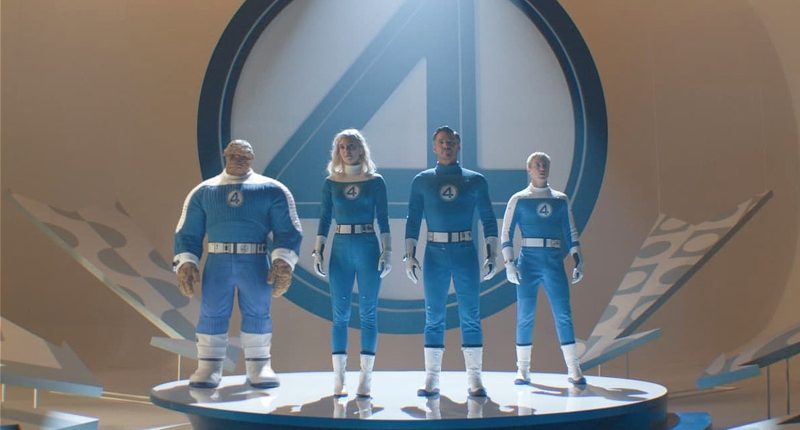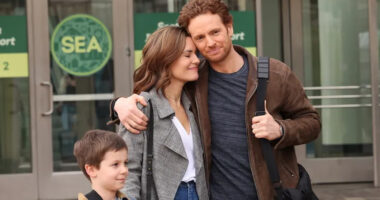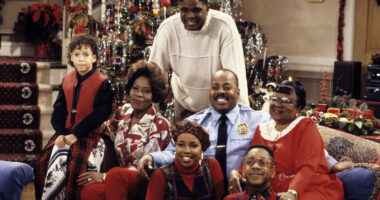Share this @internewscast.com
As Wade Wilson/Deadpool (Ryan Reynolds) noted in “Deadpool and Wolverine,” the Marvel Cinematic Universe is experiencing a bit of a downturn. While films like “Guardians of the Galaxy Vol. 3,” “Shang-Chi and the Legend of the Ten Rings,” and “Werewolf by Night” illustrate that the MCU still has shining moments in the 2020s, Phases Four and Five have presented an alarming number of disappointments.
Projects such as “Ant-Man and the Wasp: Quantumania,” “Secret Invasion,” and “Captain America: Brave New World” have been some of the least successful in MCU history. Other films like “Thor: Love and Thunder” and “The Marvels” have received much more mixed reviews from critics and audiences compared to even the most negatively received MCU entries from the 2010s. With Phase Six beginning with “The Fantastic Four: First Steps,” it is crucial for the franchise to undertake important self-assessment.
Currently, the MCU is facing several recurrent issues, but there are 11 specific strategies that could steer the franchise back on track for Phase Six and beyond. A number of these strategies directly tackle major issues from Phases Four and Five, while others address problems that have long been shadowing the brand prior to Deadpool’s remarks. While the MCU’s present struggle is far removed from the “Avengers: Endgame” era of cultural dominance, implementing these 11 suggestions might rejuvenate its creative momentum.
No more multiverses
“Everything Everywhere All at Once” and the two “Spider-Verse” movies have already mastered multiverses on film so beautifully that the MCU’s various Phase Four and Five explorations of this concept have proven to be redundant. However, even if those features didn’t exist, the MCU’s multiverse shenanigans would still be underwhelming. Rather than use this concept for exciting standalone narratives or enthrallingly unique imagery, the MCU multiverse has largely existed to shoehorn in cameos from older, pre-2008 superhero movies.
This approach has inspired many famous crowdpleaser moments in titles like “Deadpool and Wolverine,” but fleetingly placating moviegoers has also inherently limited the possibilities of exploring alternate realities. So far, the MCU’s multiverse has only conjured up characters you’ve seen before, not tantalizingly fresh conceits. And save for the occasional exception like “Spider-Man: No Way Home,” the multiverse across Phases Four and Five has divorced the MCU from discernibly real emotions.
“Ant-Man and the Wasp: Quantumania” was so consumed by multiversal threats and voyages that the characters lost any trace of their engaging humanity. “Deadpool and Wolverine” had a similar weightlessness due to its convoluted multiversal plot elements. The latter film even featured Deadpool critiquing the multiverse and declaring it over. That kind of satirical commentary is a blatant signal that the MCU needs to retire this concept for Phase Six.
Have new superheroes headline movies again
After “Eternals” in 2021, Marvel Studios began a ceaseless streak of sequels on the big screen. The next nine consecutive MCU features (spanning Phases Four and Five) were all sequels, including the fourth “Thor” and “Captain America” installments. A decade earlier, Marvel Studios carefully launched one sequel and one original film per year, as in 2016 when “Captain America: Civil War” and “Doctor Strange” premiered. But any commitment to launching new characters theatrically has vanished in the last two phases.
Even this summer’s “non-sequels” — “Thunderbolts*” and “The Fantastic Four: First Steps” — focus on characters that have appeared (or at least their variants have) in past MCU media. It’s hard to imagine something as relatively recent as “Shang-Chi and the Legend of the Ten Rings” getting the green light in Phase Five. This emphasis on only follow-ups to prolong the lives of solo sagas like “Thor” and “Captain America” would help explain why the MCU has become inaccessible to many people.
For Phase Six and beyond, the MCU needs to return to doing features starring superheroes who have never been seen in live-action before. Doreen Green/Squirrel Girl, for instance, feels like a no-brainer for a solo motion picture, especially given her surging popularity in “Marvel Rivals.” Or what about Nighthawk, a character Marvel once eyeballed for a movie in 2009? Having Phase Six headlined by solo movies based on Captain Britain, Nova, or Dazzler could finally get the MCU’s risk-taking mojo back.
Not all MCU movies have to be massive in scale
Marvel Studios didn’t just used to have a better handle on balancing original films with sequels. The company also previously practiced a delicate stability when it came to scope. In 2015, the enormous “Avengers: Age of Ultron” was followed up two months later by the smaller-scale family comedy “Ant-Man.” Summer 2017 saw the debut of the expansive cosmic adventure “Guardians of the Galaxy Vol. 2” and the high school comedy “Spider-Man: Homecoming.” A massive MCU movie would be followed up by something more intimate and vice versa.
Phases Four and Five, though, saw every movie try to become as big as possible. “Ant-Man and the Wasp: Quantumania” was an especially egregious example of this phenomenon. The small-scale comedic pleasures of the first two “Ant-Man” adventures were eschewed in favor of massive sci-fi nonsense. “Thor: Love and Thunder” and “The Marvels” also suffered from excessive forays into grand cosmic adventures.
Not all of these movies need to be spectacles in Phase Six. Have something like “Avengers: Doomsday” co-exist with a more modestly budgeted exploration of this universe. Even in a post-“Endgame” world, not all MCU outings have to be $300 million+ behemoths to get people’s attention. Just look at how the most beloved sequences in “Spider-Man: Across the Spider-Verse” were intimate scenes between characters like Gwen Stacy and her father. Not making everything at an “Avengers” scale would get Phase Six started on the right foot.
Make the films less weighty in tone
Complaining about the MCU being too serious in Phases Four and Five may sound peculiar, given that recent MCU features have been almost ceaseless comedies like “Thor: Love and Thunder” or “Deadpool and Wolverine.” However, other recent MCU movies, on average, have weirdly succumbed to very heavy storytelling tendencies.
That’s understandable for a film like “Black Panther: Wakanda Forever,” which had to grapple with tragic real-life circumstances. But why was “Quantumania” such a grim, exposition-heavy enterprise? Why was 2025’s “Captain America: Brave New World” a mopey, bland-looking exercise that rarely displayed any fun? Even “The Marvels,” with its jovial aesthetic, had strangely weighty plot details like Carol Danvers/Captain Marvel wiping out a sun.
Phase Six should really incorporate some lighter tones, though that doesn’t mean every lead character needs to start talking like Ryan Reynolds. However, embracing the kind of zippier, cynicism-free atmospheres associated with Sam Raimi’s “Spider-Man” trilogy or the first two Christopher Reeve “Superman” films would do this franchise good. Infamous Phase Five entries like “Quantumania” and “Secret Invasion” demonstrated how diluting the color palette and having characters constantly frown doesn’t automatically lend your story thematic weight. If the MCU’s general approach to heavier stories is going to be this lackluster, Phase Six might as well embrace the fun of 2012’s “The Avengers” again.
Shoot MCU movies like movies again
“Oppenheimer” really signaled a shift in general audiences’ interest in 70mm projection. With folks traveling across state lines to check out the few theaters presenting the film in 70mm IMAX, the larger public finally became conscious of old-school projection methods that made movies look better than they ever could in your home. After this, the TV spots for “Napoleon” emphasized the film’s 70mm screenings, while advance buzz for “Sinners” has been heavily focused on the film’s 70mm IMAX showings.
With so many viewers appreciating movies shot on film, the MCU’s digitally-shot Phase Four and Five productions are in a tough spot. Starting with “Captain America: The First Avenger,” MCU movies have been mostly shot on digital cameras. However, in the modern blockbuster landscape, this tactic has made titles like “Quantumania” look cheap compared to richly textured 35mm or 70mm blockbusters. TV shows in Phases Four and Five utilizing the same digital cameras haven’t helped this problem. There are no minimal differences in how MCU movies and shows look, which just furthers the perception that tentpoles like “The Marvels” and “Captain America: Brave New World” aren’t must-sees on the biggest screens possible.
It’s time for Marvel Studios to return to the cinematography techniques of the initial four MCU installments. Shooting Phase Six movies on various film formats would make these theatrical titles more essential viewing in a post-“Oppenheimer” blockbuster movie landscape. Plus it would better distinguish Phase Six movies from Disney+ programs for audiences.
Be careful with your credit sequences
It’s now become a go-to punchline that Phases Four and Five indulged too much in credit sequences that have never paid off. In the first three MCU Phases, credit scenes would quickly get followed up, often within 12 months after the sequence debuted. The “Doctor Strange” mid-credit sequence, for instance, teased “Thor: Ragnarok,” which was scheduled for release just 364 days after “Doctor Strange.”
In contrast, Phases Four and Five featured credit sequences on films like “Eternals,” “Thor: Love and Thunder,” and “Doctor Strange in the Multiverse of Madness” (among others) that teased sequels and follow-ups that weren’t even greenlit at the time. Meanwhile, the mid-credit sequence in “Ant-Man and the Wasp: Quantumania” teasing “Avengers: The Kang Dynasty” never bore fruit thanks to the studio’s dismissal of Kang actor Jonathan Majors.
Marvel Studios can’t predict everything that happens in the world, but the studio needs to make sure Phase Six’s credit sequences actually tease things coming out relatively soon. The credit sequences during the Infinity Saga suggested disparate adventures that would converge on a larger outing involving those Infinity Stones. Phases Four and Five, on the other hand, hinted at an array of future stories involving Starfox (Harry Styles), Clea (Charlize Theron), Hercules (Brett Goldstein), and others. None of it was cohesive, suggesting too many loose threads for audiences to keep track of. Phase Six MCU outings desperately need to streamline one of the franchise’s most famous elements and get them back to basics.
Don’t be afraid to let new filmmakers leave their mark
Some of the most acclaimed MCU movies, like “Black Panther” and the “Guardians of the Galaxy” trilogy, are unabashedly the products of their respective directors. Filmmaker Destin Daniel Cretton also injected exciting idiosyncrasies into “Shang-Chi and the Legend of the Ten Rings,” particularly in how the action scenes were filmed. However, Phase Four and Five MCU properties have by and large begun blurring together.
Filmmakers like Shawn Levy, Julius Onah, and Peyton Reed were so fiercely determined to mimic past live-action Marvel adaptations that no distinctive personalities emerged in their filmmaking. These films could have been helmed by anyone. “The Marvels” director Nia DaCosta, meanwhile, has openly said she felt creatively stifled working on that movie.
The MCU’s most famous films let distinctive voices run rampant with obscure superheroes, but that’s been abandoned in a post-“Avengers: Endgame” world. The MCU will never be an auteur paradise, but it’s time to let the next generation of MCU directors leave their marks. Seek out young filmmakers who have singular visions for certain characters and let them deliver a unique movie the same way James Gunn and Ryan Coogler did. Letting Phase Six be guided by individual artistic visions could really make these films special again, and could also open the door for certain Phase Six titles to hit the artistic heights of “Guardians” and “Black Panther.”
The MCU should rely less on the past
“Spider-Man: No Way Home” scored delightful results by merging multiple eras of “Spider-Man” cinema into one story, but since then, the MCU has become obsessed with revisiting characters from older Marvel adaptations. “Doctor Strange in the Multiverse of Madness” and “Deadpool and Wolverine” derived their biggest crowdpleaser moments from 20th Century Fox “X-Men” character cameos, while “Avengers: Doomsday” will bring even more mutants from the 2000s back.
The MCU used to be a counterpoint to the creative shortcomings of various Fox and Sony Marvel movies, but now the studio seems obsessed with big audience reactions to seeing Blade (Wesley Snipes) or Elektra (Jennifer Garner) on-screen again. Fixating on the past has become a serious problem for the MCU in Phases Four and Five.
For Phase Six and beyond, it’s time to let go of the past. For one thing, there aren’t many other live-action Marvel movies to reference unless the MCU wants to lean on Jared Leto’s Morbius. More importantly, making sure the MCU isn’t just hyper-focused on yesteryear’s superheroes can ensure this franchise is relevant once again to younger audiences. The MCU shouldn’t just chase nostalgia geared towards older viewers, but should create entertaining stories and characters that can appeal to anyone. “Spider-Man: No Way Home” was a blast, but Phase Six can’t rely on endless attempts to mimic that movie’s nostalgic success.
Make sure your movies work as standalone entries
While there were many small details you may have missed in “Captain America: Brave New World,” one aspect of the film that everyone noticed was how much the movie relied on lore from 2008’s “The Incredible Hulk.” This outing’s primary villain was Samuel Sterns/The Leader (Tim Blake Nelson), a pay-off to an “Incredible Hulk” sequel tease, while President Ross’s (Harrison Ford) strained relationship with his daughter and connections to Stern would only make sense to folks who had that 2008 film fresh on their minds.
Just 13 years earlier, MCU newcomers could hop into “The Avengers” and totally understand what was going on. In the modern MCU, though, encyclopedic knowledge of late 2000s Marvel movies and various Disney+ shows is required to understand what is happening in movies like “Multiverse of Madness” and “The Marvels.”
Phase Six needs to address this issue pronto. Folks who adored projects like “Guardians of the Galaxy,” “WandaVision,” or “Black Panther” didn’t love those titles because of their dense lore. They enjoyed them thanks to the standalone virtues specific to those titles. Such qualities were absent from more recent MCU efforts like “Secret Invasion” and “Brave New World,” which were far more concerned with referencing as many past properties as possible. Coherency and accessibility need to be the name of the game for Phase Six MCU projects. Otherwise, this franchise will birth further impenetrable misfires like “Brave New World.”
Return to hiring legendary supporting actors
In the MCU’s earliest days, titles like “Iron Man” and “Captain America: The First Avenger” took a cue from Marlon Brando showing up in “Superman” and scored legendary actors that audiences wouldn’t expect to see in a superhero movie. Thus, the world witnessed Robert Redford paying homage to his iconic political thriller roles as Alexander Pierce in “Captain America: The Winter Soldier,” while Michael Douglas mentored a new version of the titular superhero in “Ant-Man.” In Phase Three, Cate Blanchett, Forest Whitaker, and Annette Bening (among many others) showed up in various films, lending them a sense of prestige.
However, this casting mandate largely vanished in Phases Four and Five. The biggest name in “Quantumania” was Bill Murray (who appeared in one scene), while “Thor: Love and Thunder” featured Russell Crowe, with both actors well past the box office primes of films like “Ghostbusters” and “Gladiator,” respectively. Instead, the MCU’s nods to cinema’s past have largely been confined to those aforementioned cameos from older Marvel superheroes. In the process, though, the MCU has lost some of its prestigious luster.
Phase Six needs to embrace these kinds of performers once more and create juicy, fascinating figures for some of cinema’s greatest actors to play. Blanchett and Redford (among others) delivered genuinely strong work in their superhero movie exploits. Phase Six would similarly benefit from some classic Hollywood star power.
Smaller budgets could inspire superb creativity
In the earliest Marvel Studios days, rigid executives like former chairman Ike Perlmutter insisted that the studio pinch every penny and never break the bank. That’s how initial MCU movies like “Iron Man” cost as little as $140 million. While budgets reasonably ballooned for Phase Three projects, they’ve gotten worryingly out of control for Phase Four and Five installments. Nearly every 2020s MCU movie has a budget of $200 million or more, while titles like “Thor: Love and Thunder” cost $250 million+ to make.
Some recent MCU outings are even among the most expensive movies in history, with “Ant-Man and the Wasp: Quantumania” costing a staggering $327 million to produce while “The Marvels” racked up a $300 million+ price tag. The MCU’s costs are especially jaw-dropping considering the budgets of other 2020s tentpoles, like the much smaller $100 million price tag for “Oppenheimer.”
Even under the best of circumstances, “Quantumania” and “The Marvels” would have needed a miracle to be profitable on their bloated budgets. The MCU can no longer keep making movies wielding such hefty costs. Instead, future Marvel outings should embrace budgets that are even smaller than that of the first “Iron Man.” Dare to produce titles in the $80-110 million range so that these features don’t have as much box office pressure to live up to. Plus less financial peril could open up exciting new doors for creative risk-taking. It’s certainly infinitely harder to upend expectations when making something as expensive as “Thor: Love and Thunder.”









